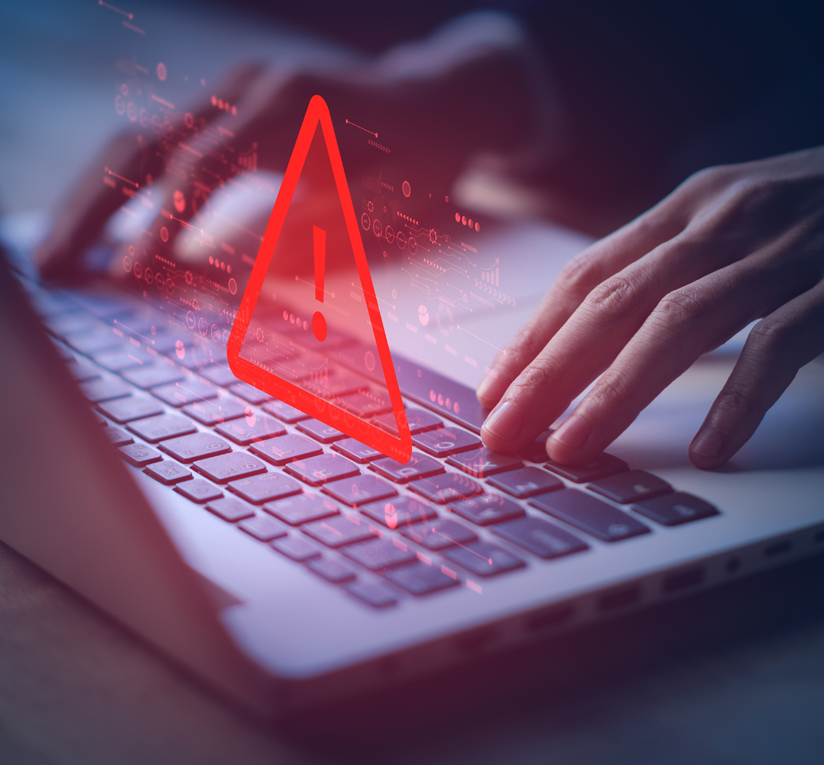
What is Ransomware: FinTech Industry
Table of Contents
A computer security threat called ransomware stops access to your computer or files until you make a ransom payment to the attacker. It is an increasing problem that puts people, companies, and government bodies at risk. A system is most often infected with ransomware through phishing, malicious downloads, or weaknesses in older software. After it is triggered, the program encrypts everything in its path so the user cannot access it. After that, a message appears demanding a sum of cryptocurrency, such as Bitcoin, be sent to obtain the key needed to regain access. In most cases, swiftly paying a ransom does not stop cybercriminals from a second strike, nor restore your files as they wish. Examples of ransomware are crypto-ransomware that locks up files and locker ransomware that locks you out of your device. Many important ransomware attacks have affected healthcare, stopped pipelines from functioning, and resulted in million-dollar losses. So, ransomware now ranks among the most serious and costly types of cybercrime. No company should rely only on one step. For ransomware prevention, use cybersecurity practices, update your software and programs, make regular backups, and keep employees informed. It is suggested that companies adopt solid security standards, teach staff about phishing attacks, and protect their most important systems from internet exposure.
Ransomware Threat to the FinTech Industry
If you experience an attack, make sure to report it to the authorities and call in cybersecurity experts instead of attempting to speak with the attackers. It is important to learn about ransomware and its workings to keep your digital resources and business running smoothly, now that the world is so connected. Since cyber attackers are always using newer techniques, knowing about and preparing for ransomware is essential for today’s cybersecurity.
The financial sector has long been a favorite target of cybercriminals, but the threat landscape has escalated significantly in recent years. One of the most pervasive and damaging threats facing the financial services industry today is ransomware. Ransomware attacks, in which malicious actors encrypt an organization’s data and demand a ransom for its release, have grown more sophisticated and costly.
The Rise of Ransomware in the Financial Sector
The COVID-19 pandemic triggered a dramatic increase in ransomware attacks across all industries. But the financial sector was hit particularly hard in the first half of 2020 alone. Ransom ware attacks on financial institutions rose by 417%, according to financial organizations. Already vulnerable due to rapid shifts in working practices, they found themselves under siege by cybercriminals using increasingly advanced techniques.
Ransomware attacks on the financial sector are particularly damaging because the cost of a successful attack can be astronomical. It is estimated that the average annual cost of cybercrime in the financial sector is $18.5 million. Making it one of the most expensive targets for cybercriminals, the high-value data stored by financial institutions. Such as personal information and financial records, make them prime targets for ransom ware attacks.
How IP Services Mitigate Ransomware Risk
At IP Services, we understand the unique risks that financial institutions face. Our managed services are designed to protect organizations from ransom ware and other cyber threats by implementing robust security measures. One of the key ways we mitigate ransomware risk is through our Virtual Private Cloud (VPC) solution.
Our VPC solution ensures that client data is securely stored in two separate locations, which are inaccessible from the client’s network. This isolation protects the data from any ransomware infection that may occur within the network. The data is also encrypted, adding layer of protection.
In the event of a ransomware attack, IP Services immediately isolates the affected client’s network to prevent further damage. We then restore the client’s systems from a clean, pre-infection snapshot, ensuring that no trace of the ransomware remains. This approach allows businesses to recover quickly from ransom ware attacks without paying the ransom.
The Role of Endpoint Detection and Response (EDR)
Another critical component of our ransomware defense strategy is our Endpoint Detection and Response (EDR) solution. EDR acts as a personal security operations center (SOC) for our clients, continuously monitoring endpoints for signs of suspicious activity. If ransomware or any other malicious behavior is detected, our EDR solution immediately alerts our security team, enabling a swift response.
By leveraging EDR, IP Services can detect ransomware attacks in their early stages, before they have a chance to spread and cause widespread damage. This proactive approach significantly reduces the risk of a successful ransomware attack.
The Cost of Ransomware
The financial impact of a ransomware attack can be devastating. In addition to the cost of the ransom itself, businesses face downtime, lost revenue, and potential reputational damage. The average downtime following a ransom ware attack is nearly a month, during which businesses are unable to operate normally.
Financial institutions are particularly vulnerable to the reputational damage caused by a ransom ware attack. Customers trust financial organizations to protect their sensitive data, and a ransomware attack can erode that trust. Recovering from such an incident often requires a significant investment in public relations and customer outreach.
Conclusion
Ransomware represents one of the most significant threats to the financial services industry today. However, with the right security measures in place, businesses can protect themselves from this growing threat. At IP Services, we provide financial institutions with the tools and expertise they need to mitigate ransom ware risk and recover quickly from any attacks that do occur. Our comprehensive approach to cybersecurity ensures that our clients can operate with confidence, knowing that their data is secure.